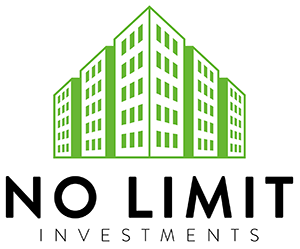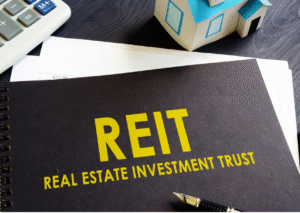What Are Long-Term Rental Property Loans and Why Do They Matter?
Long-term rental property loans are financing tools designed to help investors purchase and hold income-generating real estate for extended periods. Unlike short-term loans such as fix and flip loans, long-term rental loans allow investors to build steady cash flow through leasing residential or commercial properties. These loans typically range from 15 to 30 years and are often structured with competitive interest rates that make it easier for investors to manage mortgage payments through monthly rental income.
For real estate investors, understanding how these loans function is essential. They provide the backbone for wealth creation through the buy-and-hold strategy, a proven method for building sustainable income and long-term appreciation. A properly structured long-term loan not only ensures stability but also provides tax benefits, equity growth, and leverage to expand one’s portfolio over time (U.S. Department of Housing and Urban Development, 2024).
How Do Long-Term Rental Property Loans Differ from Short-Term Real Estate Financing?
Short-term real estate loans—like fix and flip or bridge loans—are usually designed for properties that investors plan to renovate and sell quickly. They come with higher interest rates but shorter repayment periods, typically between six months and three years. In contrast, long-term rental property loans provide financing stability for investors intending to hold onto a property for income generation.
For example, Fix & Flip Loans may be appropriate for rapid rehabs or resale opportunities, but when an investor aims to maintain a property as part of a rental portfolio, a Buy & Hold Mortgage or DSCR (Debt Service Coverage Ratio) Loan may be more appropriate. These types of loans evaluate the property’s rental income rather than the borrower’s personal income, allowing for flexibility in qualification criteria (Freddie Mac, 2023).
What Are the Core Requirements for Securing Long-Term Rental Property Loans?
When applying for long-term rental property loans, lenders typically assess several factors that demonstrate both property viability and investor credibility. These include:
- Creditworthiness: A FICO score above 680 is often preferred, though some lenders may offer flexibility for experienced investors.
- Down Payment: Investors should expect to pay 20%–25% down for investment properties.
- Property Appraisal: The loan amount is tied to the property’s appraised value and projected rental income.
- DSCR Evaluation: For DSCR loans, the Debt Service Coverage Ratio measures whether the rental income can sufficiently cover debt obligations—typically requiring a ratio of 1.25 or higher.
Lenders also examine experience in property management and existing assets. Working with companies specializing in Real Estate Financing Solutions, such as those found on No Limit Investments, can simplify this process through investor-friendly loan programs tailored for various portfolio needs.
How Can Investors Use BRRRR Financing to Maximize Long-Term Gains?
One of the most effective strategies for expanding a rental portfolio is the BRRRR method—Buy, Rehab, Rent, Refinance, Repeat. Through this approach, investors can recycle the same capital to acquire multiple properties without constantly injecting new funds.
Here’s how it works:
- Buy a property using a Fix & Flip Loan or short-term financing.
- Rehab the property to increase its value.
- Rent it out to generate income.
- Refinance into a long-term loan, such as a DSCR Loan or Buy & Hold Mortgage.
- Repeat the process using the equity gained.
By combining BRRRR Financing with Cash-Out Refinance options, investors can leverage the property’s increased value to reinvest into additional acquisitions—an approach that builds long-term financial stability and equity growth.
What Loan Options Support Long-Term Rental Strategies?
Selecting the right loan depends on investment goals and property type. Below are some of the most common financing options investors use for long-term rental strategies:
- Buy & Hold Mortgages: Ideal for investors planning to retain properties for consistent rental income.
- DSCR Loans: Evaluate rental income instead of personal earnings, streamlining approvals for portfolio investors.
- Cash-Out Refinance: Allows investors to tap into built-up equity to purchase more properties or make improvements.
- New Construction Loans: Support investors developing rental units from the ground up.
- Fix & Flip Loans (Transition Financing): Used initially for renovations before converting into long-term financing.
At No Limit Investments, these options are tailored to fit investor profiles—from first-time landlords to seasoned professionals—offering flexibility and speed that traditional banks often cannot match.
What Factors Should You Consider Before Applying for a Long-Term Rental Loan?
Before applying, investors should analyze both financial and property-specific considerations. Key factors include:
- Market Location: Research the local rental demand, population trends, and job growth.
- Loan-to-Value (LTV) Ratio: A lower LTV ratio can lead to better loan terms and lower risk exposure.
- Cash Flow Potential: Ensure that projected rent covers not only mortgage payments but also taxes, insurance, and maintenance costs.
- Exit Strategy: Determine whether your goal is steady cash flow or long-term appreciation.
By combining these insights with guidance from investor-focused financing partners, such as those at No Limit Investments, applicants can improve approval odds and optimize their funding structure.
How Does Loan Type Impact Cash Flow and Long-Term Returns?
The type of loan an investor chooses can significantly affect both monthly cash flow and overall return on investment (ROI). For instance, a 30-year fixed-rate Buy & Hold Mortgage provides predictable payments that support long-term stability, while a DSCR Loan focuses on maximizing property income potential.
Alternatively, a Cash-Out Refinance can unlock trapped equity, allowing investors to reinvest funds into new rental opportunities. Meanwhile, New Construction Loans enable developers to create purpose-built rentals, increasing potential profitability in growing markets (Federal Housing Finance Agency, 2024).
Each of these financing paths contributes differently to an investor’s financial landscape. The right mix of loan products provides both liquidity and scalability.
How Can Investors Strengthen Their Loan Applications?
Investors can take practical steps to improve their approval chances for long-term rental property loans. Consider the following strategies:
- Build a Strong Financial Profile: Maintain a solid credit history and keep debt-to-income ratios low.
- Show Experience: Document previous rental management success or partner with an experienced co-investor.
- Prepare a Detailed Property Analysis: Include cash flow projections, renovation costs, and market comparables.
- Partner with a Specialized Lender: Work with lenders like No Limit Investments that focus on investor-centered products and flexible underwriting.
Taking the time to prepare a thorough application demonstrates both professionalism and financial readiness, which can help secure better loan terms.
What Are the Long-Term Benefits of Choosing the Right Loan Strategy?
The advantages of securing the right long-term rental loan extend beyond immediate financing. They include:
- Steady Cash Flow: Reliable monthly income from tenants.
- Tax Advantages: Deductions on mortgage interest, property taxes, and depreciation.
- Equity Growth: Increased property value over time enhances investor net worth.
- Portfolio Scalability: Leveraging equity through refinances supports continued acquisitions.
By choosing a financing partner that offers comprehensive real estate financing solutions, investors can create a structured, scalable approach to wealth building through property ownership.
Are You Ready to Build Long-Term Wealth with Strategic Financing?

Whether you’re expanding an existing portfolio or starting your investment journey, understanding how to structure your financing is the first step toward long-term success. At No Limit Investments, investors gain access to a range of specialized programs including Fix & Flip Loans, Buy & Hold Mortgages, BRRRR Financing, Cash-Out Refinancing, DSCR Loans, and New Construction Loans—all tailored to support diverse investment goals.
By leveraging expert guidance, flexible underwriting, and fast funding, investors can build portfolios that generate income and grow in value over time. It’s not just about buying property, it’s about creating a foundation for financial independence.
Final Thoughts
Long-term rental property loans are the cornerstone of sustainable real estate investing. When selected strategically, these financing tools unlock opportunities for consistent cash flow, scalable portfolio growth, and lasting wealth. Investors who take the time to understand each loan type and align it with their financial goals, position themselves for success in an ever-evolving market.
Working with the right financial partner makes all the difference. Through trusted lenders like No Limit Investments, investors can access personalized loan programs that empower them to achieve their investment dreams with confidence and clarity.
Works Cited
Federal Housing Finance Agency. Understanding Mortgage Loan Options for Rental Investors. 2024. www.fhfa.gov.
Freddie Mac. Rental Property Financing and DSCR Loan Insights. 2023. www.freddiemac.com.
U.S. Department of Housing and Urban Development. Rental Housing and Investment Market Overview. 2024. www.hud.gov.
Frequently Asked Questions
1. What qualifies as a long-term rental property loan?
A long-term rental property loan typically refers to financing structured for properties intended to be held for over 10 years. These loans often feature 15-, 20-, or 30-year amortization periods, giving investors time to build equity and maintain steady rental income. They are ideal for buy-and-hold investors focused on cash flow and appreciation rather than quick resale.
2. How is a long-term rental loan different from a primary residence mortgage?
While both types of loans are secured by property, a long-term rental loan is specifically designed for non-owner-occupied properties. This means the property must be leased to tenants rather than used as the borrower’s home. Because of the higher risk associated with investment properties, these loans often require larger down payments and slightly higher interest rates.
3. Can I qualify for a long-term rental property loan without personal income verification?
Yes. Programs such as DSCR Loans (Debt Service Coverage Ratio Loans) evaluate the property’s income potential instead of the borrower’s personal income. This makes qualification easier for full-time investors, self-employed individuals, or those managing multiple rental units.
4. How can refinancing help me grow my rental portfolio?
Refinancing options—especially Cash-Out Refinance Loans—allow investors to access the equity they’ve built in existing properties. This equity can be used for down payments on new acquisitions, property upgrades, or debt consolidation. It’s a powerful strategy for scaling through the BRRRR method (Buy, Rehab, Rent, Refinance, Repeat).
5. What makes No Limit Investments a strong choice for real estate investors?
No Limit Investments offers a diverse range of real estate financing solutions crafted specifically for investors. From Fix & Flip Loans and Buy & Hold Mortgages to DSCR, New Construction, and Cash-Out Refinance Loans, the company prioritizes flexibility, speed, and personalized underwriting. This enables investors to act quickly on opportunities, maintain strong cash flow, and scale confidently in today’s market.







